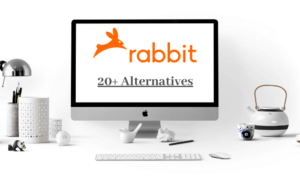In today’s rapidly evolving technology landscape, scalability has become a crucial aspect of application development. As user demands increase, businesses must ensure their applications can handle growing traffic and deliver a seamless user experience. Kubernetes, an open-source container orchestration platform, has emerged as a leading solution for scaling applications efficiently and effectively. In this blog post, we will explore the best practices and strategies for scaling applications with Kubernetes.
Understanding Kubernetes and Scaling
Before diving into the best practices, let’s briefly understand what Kubernetes is and how it facilitates application scaling. Kubernetes serves as a container orchestration solution, streamlining the process of deploying, scaling, managing, and monitoring applications encapsulated within containers. It allows developers to run applications across a cluster of machines, abstracting away the underlying infrastructure complexities.
Scaling applications with Kubernetes involves horizontally adding or removing instances of an application to handle varying levels of traffic. Kubernetes achieves this by utilizing features like auto-scaling, load balancing, and self-healing capabilities. Let’s now explore some best practices for scaling applications effectively.
See Also: 10 Best Front-End Web Development Tools
Designing Applications for Scalability
To achieve optimal scalability with Kubernetes, it’s important to design applications with scalability in mind from the start. Here are some key considerations:
- Microservices Architecture: Adopting a microservices architecture enables you to scale specific components independently. Breaking down your application into smaller, decoupled services allows you to scale only the necessary parts when needed, without impacting the entire system.
- Stateless Services: Design your application services to be stateless, where each request can be processed independently. By avoiding reliance on server-side sessions or local storage, you enable easy horizontal scaling without worrying about data consistency or replication.
- Horizontal Pod Autoscaling (HPA): Leverage Kubernetes’ HPA feature to automatically adjust the number of application instances based on CPU or custom metrics. Define appropriate resource limits and requests for containers, enabling Kubernetes to make informed scaling decisions.
Setting Up Kubernetes Clusters for Scalability
To effectively scale applications, you need to configure Kubernetes clusters to handle the increased workload and traffic demands. Consider the following best practices:
- Node and Pod Autoscaling: Utilize Kubernetes’ autoscaling capabilities to dynamically scale the cluster based on resource utilization. Configure Cluster Autoscaler to add or remove nodes based on resource demands, while Horizontal Pod Autoscaler adjusts the number of pods.
- Efficient Resource Allocation: Optimize resource allocation within your cluster to ensure maximum utilization. Use resource requests and limits to allocate appropriate CPU and memory resources to pods. Regularly monitor and adjust these values based on actual usage patterns.
- Distributing Workloads: Distribute your application workloads across multiple nodes to prevent resource bottlenecks and improve fault tolerance. Leverage Kubernetes’ load balancing features to evenly distribute traffic and direct requests to available instances.
Related: 7 NodeJS Best Practices for Developers
Monitoring and Scaling in Production
Monitoring your application’s performance is essential for effective scaling. Here are some practices to consider:
- Monitoring Metrics: Utilize Kubernetes’ built-in metrics and monitoring tools to gather insights into resource usage, application performance, and cluster health. Popular options include Prometheus and Grafana, which provide real-time visibility into your cluster.
- Alerting and Thresholds: Set up alerting mechanisms to notify you when critical metrics reach predefined thresholds. Establishing appropriate alerts ensures you can proactively address performance bottlenecks or scaling issues.
- Load Testing and Chaos Engineering: Regularly perform load testing and chaos engineering exercises to simulate high-traffic scenarios and identify potential failure points. These tests help you proactively assess and improve your application’s scalability and fault tolerance.
See Also: ChatGPT Alternatives
Conclusion
Scaling applications with Kubernetes requires a well-thought-out approach and adherence to best practices. By designing applications for scalability, setting up scalable Kubernetes clusters, and implementing robust monitoring and scaling strategies, you can ensure your applications can handle growing user demands and deliver a seamless experience.
Remember, scalability is an ongoing process. Continuously monitor and optimize your application’s performance, and iterate on your scaling strategies as your application and user base evolve. With Kubernetes as your scalable infrastructure backbone, you can confidently tackle the challenges of scaling applications in today’s dynamic digital landscape.
By following these best practices and leveraging the power of Kubernetes, you can unlock the true potential of your applications and drive business growth.





















